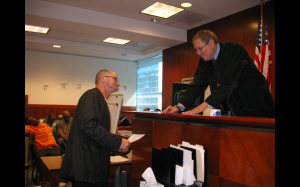 THE BEST OF: The following article, originally posted on September 9, 2012, describes how California Counties can make the best use of the state’s new realignment reform process. PDF
THE BEST OF: The following article, originally posted on September 9, 2012, describes how California Counties can make the best use of the state’s new realignment reform process. PDF
POTENTIAL SENTENCING SYSTEM REFORM IN CALIFORNIA COUNTY
I have set out possible sentencing reforms, based on the “Twelve Part Series on Evidence-Based Sentencing Systems” that may be relevant to a California County’s Realignment Process.
SENTENCING AND MANDATORY SUPERVISION UNDER PC 1170(H)
- Start the risk assessment and classification process at plea or sentencing if possible, so the judge can make the most appropriate sentencing decisions.
- Create a seamless process for offenders, with a designated sentencing judge and staff monitoring and supervising offenders through the entire sentencing period.
- Develop court tracks that reflect probation classifications based on risks/needs assessments, and tailor appropriate court involvement and contacts to that data.
- Where appropriate, hold court hearings for in-custody offenders to encourage compliance with a rehabilitation plan through continued court monitoring.
- Use the court’s jurisdiction to motivate offenders to do well in their program by providing substantial incentives keyed to an incentives guideline.
- Have all newly released offenders, on “mandatory supervision”, meet with the judge for a brief interview, to set goals and remind the offender of program rules.
- Use custody as a sanction of last resort, relying on increased rehabilitation and treatment requirements, as well as, community service to correct misbehavior.
- Take advantage of the latest scientific findings, using evidence based sentencing practices to engage the offender in pro-social activities and cognitive therapies.
- Create a technology system able to share data and information, reducing the need for team member’s personal presence, but maintaining court’s presence/influence.
- Look to probation, other government agencies, and community for partnerships.
POST RELESE COMMUNTIY SUPERVISON
- Involve the court early, if only as a symbol of the system’s new found solidarity and commitment to work together, with the judge assisting in the process.
- The court should be considered an important resource in the reentry process, and while not directing the rehabilitation plan, assisting probation and the community.
- The court should briefly interview the offender returned to the county, to remind the offender of the court’s interest, support, and concern.
- A Reentry Court. authorized by statute at the time of the revocation hearing, may become involved as a community and probation based option even before a violation occurs, in a way, similar to the process defined above under 1170 (H).

